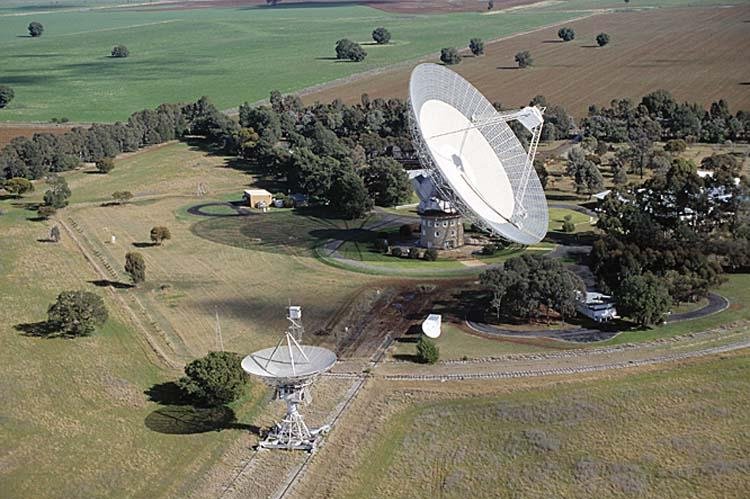Astronomers say the forthcoming lawn-mowing robot, from Roomba-maker iRobot, could interfere with their radio telescopes. Photo by John Sarkissian/CSIRO Parkes Observatory
CHARLOTTESVILLE, Va., April 17 (UPI) -- Astronomers may have formed secret alliance with the lawn care industry. What else can explain the anger of star-watching scientists over iRobot's forthcoming lawn-mowing Roomba?
In truth, officials with the National Radio Astronomy Observatory aren't so much concerned about lawn care labor as they are about their share of the radio spectrum.
You see, the new autonomous lawn-mowing technology -- from iRobot, maker of the world famous vacuum robot Roomba -- needs to communicate. To do so, iRobot is asking the FCC to grant their customers permission to use small, localized portions of the radio spectrum.
Roomba is able to safely navigate the insides of houses by sensing solid objects -- walls, furniture, people. Solid boundaries don't always separate the lawn form the garden or a busy street. What's to keep the Roomba lawnmower from coasting off the grass and into an intersection?
One option is to dig a trench around the yard and bury an electronic fence, but that's labor intensive. The option iRobot prefers is the use of several radio-transmitting beacons staked in the corners of the yard. The beacons would communicate with the robot and keep it in bounds.
The company says these beacons would be limited in scale and scope, and that these localized communication grids would not interfere with established radio frequency networks, like GPS and cellular systems. That's why the iRobot is requesting their product be exempt from FCC regulations that apply to radio frequency use.
The NRAO isn't happy. The iRobot lawnmowers would be using a frequency range they say is reserved for their telescopes -- 6240 to 6740 MHz.
"The purpose of singling out this frequency band is to allow interference-free observation of the 6.66852 GHz spectral line of methanol (CH3OH) that is abundant in star-forming regions and serves as a galactic beacon of star-forming activity owing to its maser-like qualities," NRAO officials wrote in a public comment to the FCC. "This also allows the Observatory's telescopes to do a kind of celestial cartography that measures distances to star-forming regions with high precision, charting the course of galactic evolution."
The makers of the lawnbot say their product will be limited to residential use, and that a 12-mile buffer between any radio telescope and lawnbot system is plenty to ensure no interference. The NRAO says a 55-mile buffer is needed.
"NRAO is not trying to stop this, NRAO just wants people to respect where its telescopes are," Harvey Liszt, spectrum manager with the NRAO, told Wired. Liszt said the public back-and-forth between his group and iRobot -- a rather strange pair of rivals -- is odd, to say the least.
For now, both groups will await the word of the FCC.















